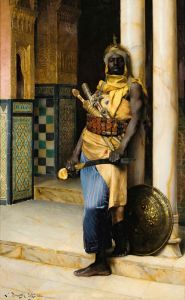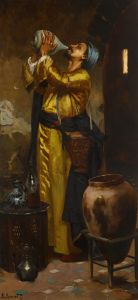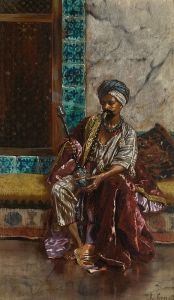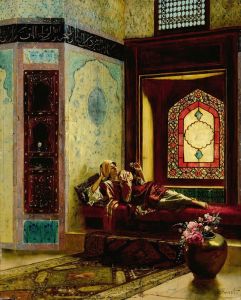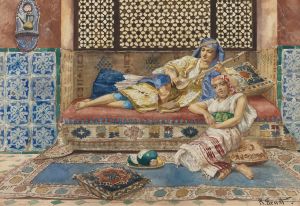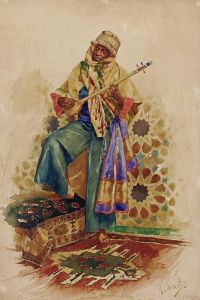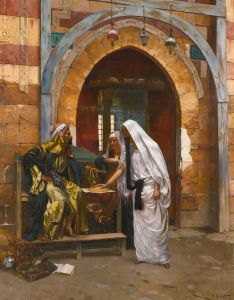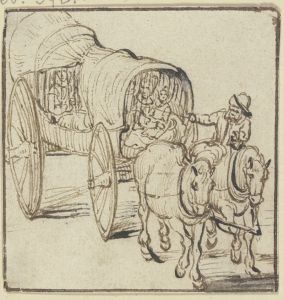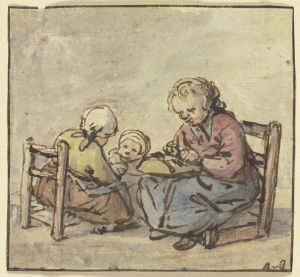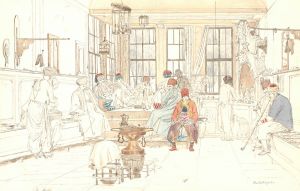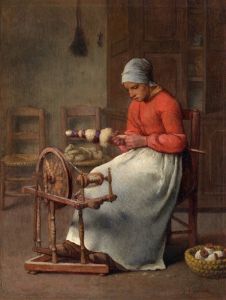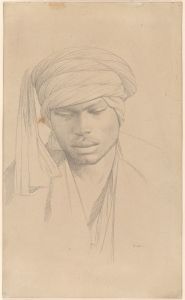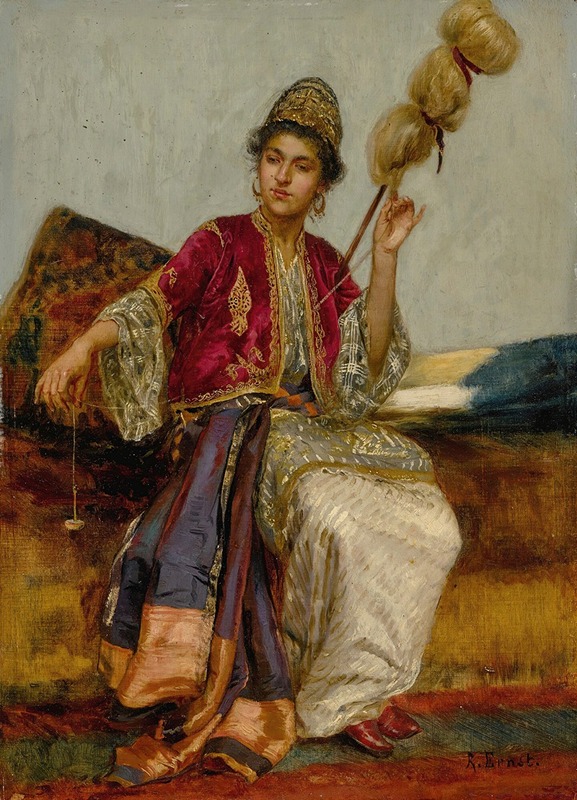
La Fileuse
A hand-painted replica of Rudolf Ernst’s masterpiece La Fileuse, meticulously crafted by professional artists to capture the true essence of the original. Each piece is created with museum-quality canvas and rare mineral pigments, carefully painted by experienced artists with delicate brushstrokes and rich, layered colors to perfectly recreate the texture of the original artwork. Unlike machine-printed reproductions, this hand-painted version brings the painting to life, infused with the artist’s emotions and skill in every stroke. Whether for personal collection or home decoration, it instantly elevates the artistic atmosphere of any space.
Rudolf Ernst was an Austrian painter known for his Orientalist works, which often depicted scenes inspired by the cultures and landscapes of the Middle East and North Africa. One of his notable paintings is "La Fileuse," which translates to "The Spinner" in English. This artwork exemplifies Ernst's fascination with the exotic and his meticulous attention to detail, characteristics that are prevalent in his body of work.
"La Fileuse" portrays a serene and intimate scene of a woman engaged in the act of spinning. The painting captures the essence of daily life, focusing on the traditional craft of spinning yarn, which has been a vital part of many cultures for centuries. Ernst's depiction is rich in detail, showcasing his ability to render textures and fabrics with precision. The woman's attire is often depicted in vibrant colors and intricate patterns, reflecting the artist's interest in the textiles and costumes of the regions he was inspired by.
Ernst's work is characterized by its vivid color palette and the use of light and shadow to create depth and realism. In "La Fileuse," these elements are employed to highlight the textures of the fabrics and the serene expression of the woman, drawing the viewer into the tranquil atmosphere of the scene. The background is typically adorned with ornate decorations, which may include elements such as patterned tiles or intricately carved woodwork, further emphasizing the cultural context of the painting.
As an Orientalist artist, Ernst was part of a broader movement in 19th-century European art that sought to depict the "Orient"—a term used at the time to describe the Middle East, North Africa, and parts of Asia. This movement was characterized by a fascination with the exotic and the romanticized portrayal of Eastern cultures. While Orientalist art has been critiqued for its stereotypical and sometimes inaccurate representations, it also reflects the period's interest in exploring and documenting different cultures.
Rudolf Ernst was born in Vienna in 1854 and studied at the Academy of Fine Arts in Vienna. He later moved to Paris, where he became part of the vibrant art scene and developed his distinctive style. Ernst traveled extensively, drawing inspiration from his visits to Spain, Morocco, and Turkey, among other places. These travels deeply influenced his work, providing him with firsthand experiences of the cultures he depicted in his paintings.
"La Fileuse" is a testament to Ernst's skill as a painter and his ability to capture the beauty and intricacy of everyday life in a culturally rich setting. The painting not only showcases his technical prowess but also offers a glimpse into the artist's interpretation of the world he observed. Through his art, Ernst invites viewers to appreciate the craftsmanship and traditions of the cultures he admired, while also highlighting the universal themes of work and domestic life.
Overall, "La Fileuse" is a significant example of Rudolf Ernst's contribution to Orientalist art, reflecting both the allure and complexity of this artistic movement. The painting remains a valuable piece for understanding the interplay between European artists and the cultures they sought to represent during the 19th century.





